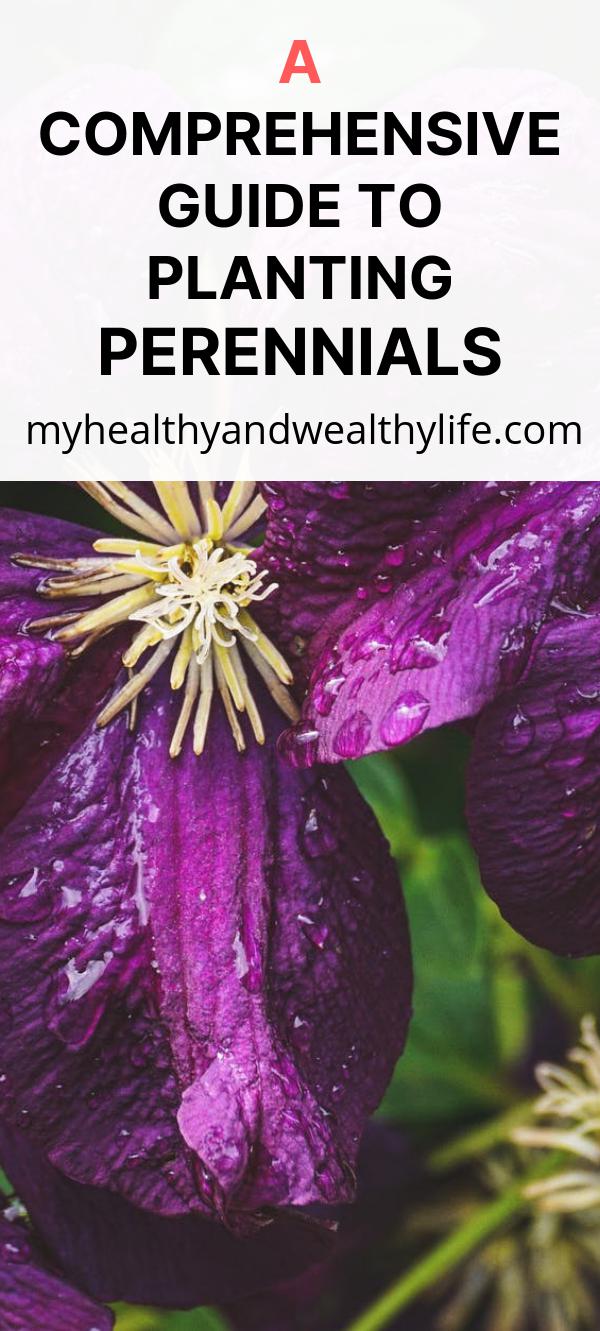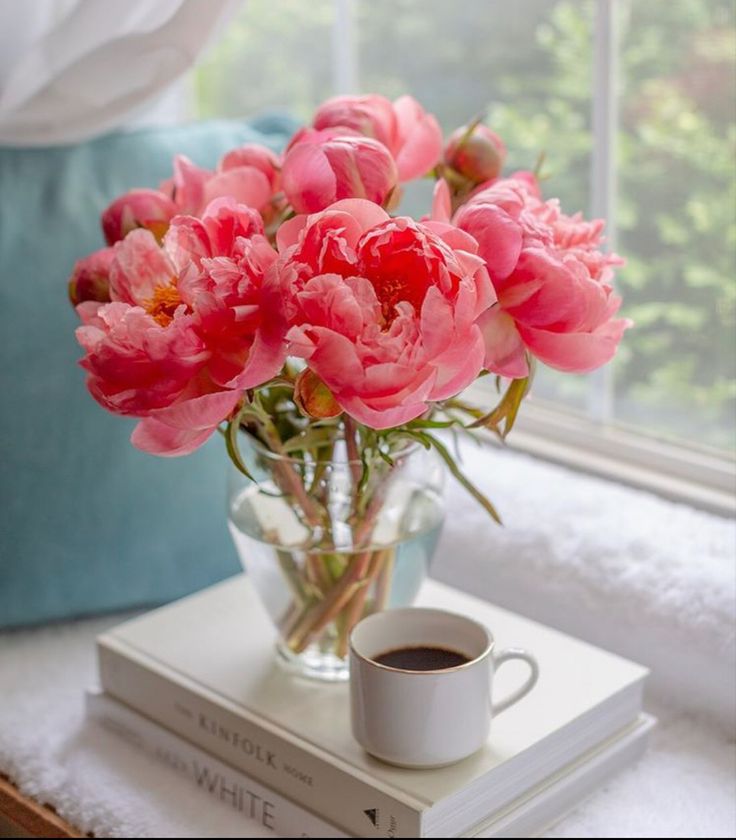The Enduring Allure of Perennials: A Guide to Planting, Care, and Enjoyment

Perennials, the steadfast backbone of many gardens, offer a unique and rewarding experience for gardeners of all levels. Unlike annuals, which complete their life cycle in a single growing season, perennials return year after year, gracing our landscapes with their beauty and resilience. This comprehensive guide will delve into the world of perennials, exploring their benefits, selection, planting, care, and propagation, empowering you to create a thriving and enduring perennial garden.
Why Choose Perennials? The Advantages are Many:
The appeal of perennials extends beyond their longevity. They offer a multitude of advantages that make them a desirable choice for any garden:
- Long-Term Investment: While the initial cost of perennials might be slightly higher than annuals, their longevity makes them a cost-effective choice in the long run. You invest once and enjoy their beauty for years to come.
- Low Maintenance: Once established, perennials often require less maintenance than annuals. Their established root systems make them more drought-tolerant and less susceptible to weeds.
- Environmental Benefits: Perennials contribute to a healthier ecosystem. Their deep root systems help prevent soil erosion, improve soil structure, and sequester carbon. They also provide valuable habitats and food sources for pollinators and other beneficial insects.
- Seasonal Interest: Perennials offer a diverse range of bloom times, colors, and textures, allowing you to create a garden that is visually appealing throughout the growing season. By carefully selecting perennials with staggered bloom times, you can ensure a continuous display of color and interest.
- Ease of Propagation: Many perennials can be easily propagated through division, cuttings, or seeds, allowing you to expand your garden and share your favorite plants with friends and family.
- Established Beauty: Over time, perennials mature and develop into more robust and impressive specimens, adding character and maturity to your garden landscape.
- Variety and Versatility: The sheer diversity of perennials available is staggering. From towering sunflowers to delicate groundcovers, there’s a perennial to suit every garden style, soil type, and climate.

Choosing the Right Perennials: Matching Plants to Your Environment:
Selecting the right perennials is crucial for their long-term success. Consider the following factors when making your choices:
- Climate and Hardiness Zone: Understand your local climate and hardiness zone. This information will help you choose perennials that are adapted to your region’s temperature extremes and growing conditions. The USDA Plant Hardiness Zone Map is a valuable resource for determining your zone.
- Sunlight Requirements: Pay close attention to the sunlight requirements of each perennial. Some thrive in full sun (at least 6 hours of direct sunlight per day), while others prefer partial shade (2-6 hours of sunlight) or full shade (less than 2 hours of sunlight).
- Soil Type and Drainage: Assess your soil type and drainage. Most perennials prefer well-drained soil that is rich in organic matter. Amend your soil with compost or other organic materials to improve drainage and fertility.
- Mature Size and Spread: Consider the mature size and spread of each perennial. Plant them with enough space to accommodate their growth without overcrowding. This will also help prevent disease and ensure good air circulation.
- Bloom Time and Color: Plan for a succession of blooms throughout the growing season. Choose perennials with different bloom times and colors to create a visually appealing and dynamic garden.
- Maintenance Requirements: Consider the maintenance requirements of each perennial. Some perennials require regular deadheading, staking, or division, while others are relatively low-maintenance.
- Resistance to Pests and Diseases: Choose perennials that are known for their resistance to pests and diseases. This will help reduce the need for pesticides and other chemical treatments.


Popular Perennial Choices:
The world of perennials is vast and diverse. Here are a few popular choices to get you started:
- Coneflowers (Echinacea): Drought-tolerant and attractive to pollinators, coneflowers come in a variety of colors and bloom for a long period.
- Daylilies (Hemerocallis): Easy to grow and prolific bloomers, daylilies offer a wide range of colors, sizes, and bloom times.
- Hostas: Shade-loving plants with beautiful foliage, hostas come in a variety of sizes, shapes, and colors.
- Peonies (Paeonia): Fragrant and showy, peonies are long-lived perennials that bloom in late spring or early summer.
- Lavender (Lavandula): Fragrant and drought-tolerant, lavender thrives in sunny locations and attracts pollinators.
- Sedum (Stonecrop): Drought-tolerant and low-maintenance, sedum provides late-season color and attracts pollinators.
- Salvia: Available in a variety of colors and sizes, salvia attracts hummingbirds and butterflies and blooms for a long period.
- Black-Eyed Susans (Rudbeckia): Cheerful and easy to grow, black-eyed susans bloom in late summer and fall and attract pollinators.
- Astilbe: Shade-loving plants with feathery plumes of flowers, astilbe adds texture and color to shady gardens.
Planting Your Perennials: Setting the Stage for Success:
Proper planting is essential for the long-term health and vigor of your perennials. Follow these steps for successful planting:
- Prepare the Soil: Amend the soil with compost or other organic materials to improve drainage and fertility. Dig a hole that is twice as wide as the root ball and just as deep.
- Remove the Plant from its Container: Gently remove the plant from its container and loosen any circling roots.
- Position the Plant: Place the plant in the hole, ensuring that the top of the root ball is level with the surrounding soil.
- Backfill the Hole: Fill the hole with soil, gently firming it around the plant.
- Water Thoroughly: Water the plant thoroughly to settle the soil and hydrate the roots.
- Mulch: Apply a layer of mulch around the plant to help retain moisture, suppress weeds, and regulate soil temperature.
Caring for Your Perennials: Ensuring Long-Term Health and Beauty:
Once your perennials are planted, proper care is essential for their long-term health and beauty:
- Watering: Water regularly, especially during dry periods. Water deeply and infrequently, rather than shallowly and frequently.
- Fertilizing: Fertilize your perennials in the spring with a balanced fertilizer. Avoid over-fertilizing, as this can lead to excessive foliage growth at the expense of blooms.
- Deadheading: Deadhead spent flowers to encourage continued blooming. This also helps prevent the plant from putting energy into seed production.
- Staking: Stake tall or floppy perennials to prevent them from falling over.
- Weeding: Keep your garden free of weeds, which compete with perennials for nutrients and water.
- Mulching: Maintain a layer of mulch around your perennials to help retain moisture, suppress weeds, and regulate soil temperature.
- Division: Divide overcrowded perennials every few years to maintain their vigor and prevent them from becoming too congested. Division is best done in the spring or fall.
- Pest and Disease Control: Monitor your perennials for signs of pests or diseases. Treat problems promptly with appropriate organic or chemical controls.
Propagating Your Perennials: Expanding Your Garden for Free:
Many perennials can be easily propagated through division, cuttings, or seeds. This allows you to expand your garden for free and share your favorite plants with friends and family.
- Division: Divide overcrowded perennials in the spring or fall. Dig up the plant, separate the root ball into smaller clumps, and replant them in new locations.
- Cuttings: Take stem cuttings from some perennials in the spring or summer. Dip the cuttings in rooting hormone and plant them in a moist growing medium.
- Seeds: Collect seeds from your perennials in the fall and sow them in the spring. Some perennial seeds require stratification (a period of cold, moist storage) before they will germinate.
FAQ About Perennials:
Q: What is the difference between annuals and perennials?
- A: Annuals complete their life cycle in one growing season, while perennials live for more than two years.
Q: When is the best time to plant perennials?
- A: The best time to plant perennials is in the spring or fall.
Q: How often should I water my perennials?
- A: Water regularly, especially during dry periods. Water deeply and infrequently.
Q: How often should I fertilize my perennials?
- A: Fertilize your perennials in the spring with a balanced fertilizer.
Q: How do I deadhead my perennials?
- A: Remove spent flowers to encourage continued blooming.
Q: How do I divide my perennials?
- A: Dig up the plant, separate the root ball into smaller clumps, and replant them in new locations.
Q: What are some common perennial pests and diseases?
- A: Common perennial pests include aphids, spider mites, and slugs. Common perennial diseases include powdery mildew, rust, and leaf spot.
Conclusion: The Enduring Rewards of Perennial Gardening:
Perennials offer a unique and rewarding gardening experience. Their longevity, low maintenance requirements, and environmental benefits make them a desirable choice for any garden. By carefully selecting the right perennials for your environment, planting them properly, and providing them with proper care, you can create a thriving and enduring perennial garden that will bring you joy for years to come. So, embrace the enduring allure of perennials and embark on a journey of horticultural discovery and lasting beauty. The rewards are truly perennial.
